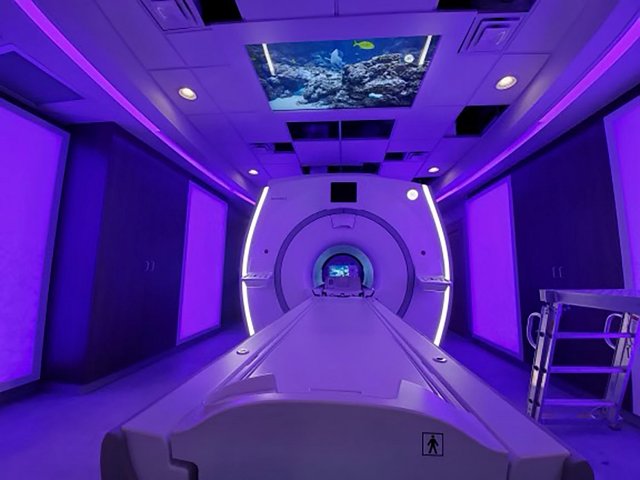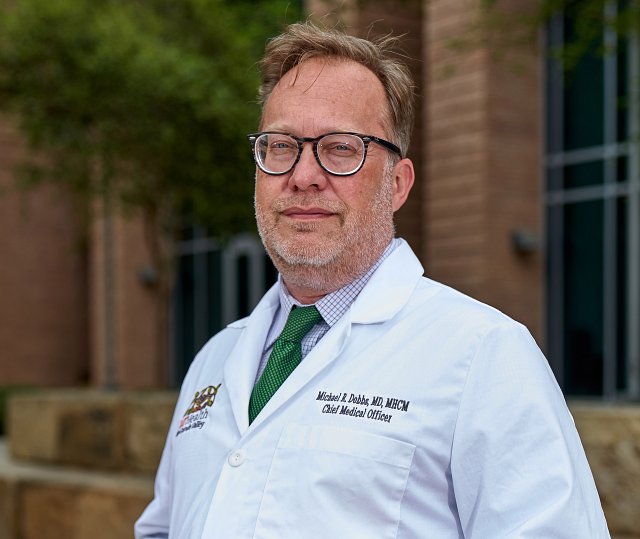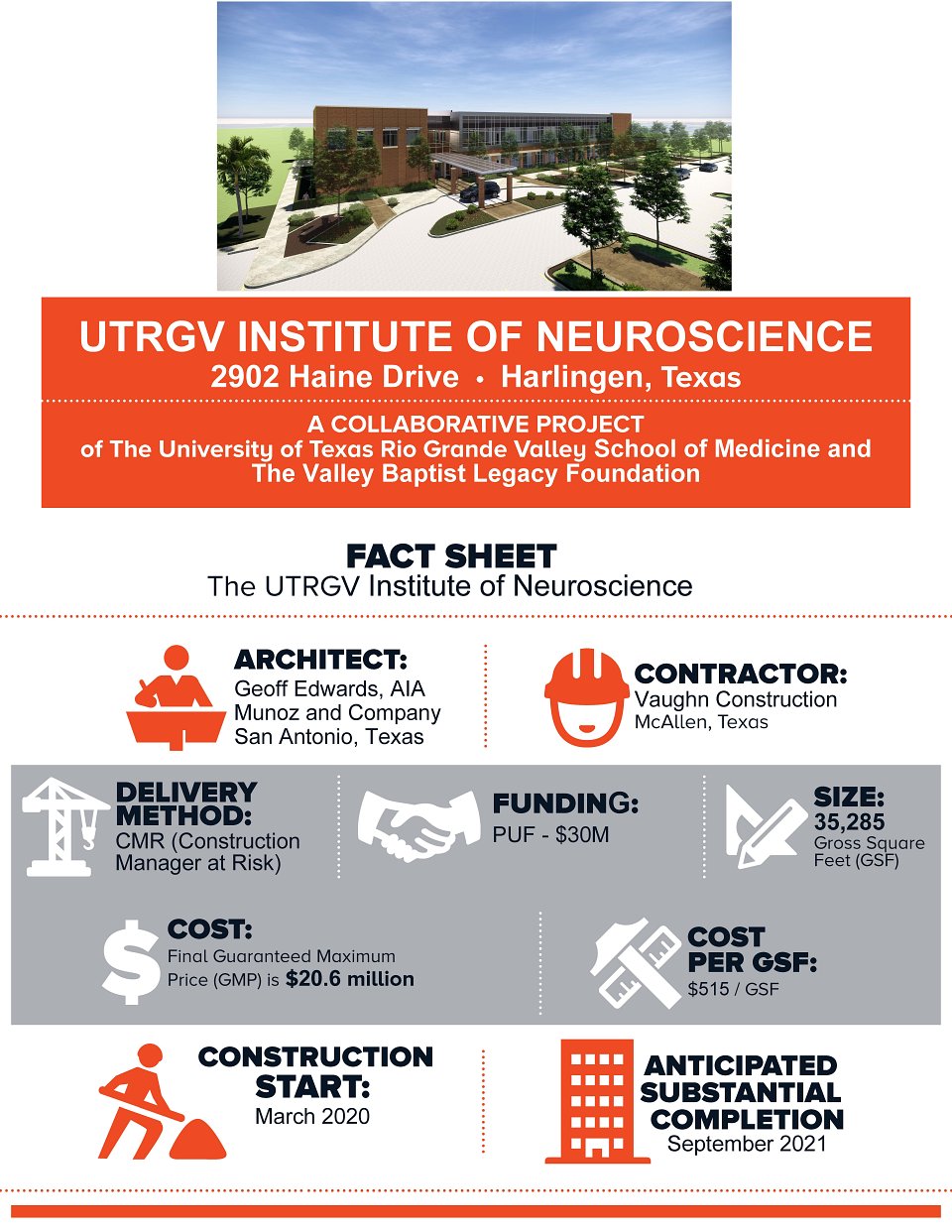Tuesday, October 5, 2021
Community
By Karen Villarreal
RIO GRANDE VALLEY, TEXAS – The UTRGV School of Medicine is expanding crucial medical services for the Rio Grande Valley with its Institute of Neuroscience (ION), set to open Oct. 26 in Harlingen.
ION will act as a hub for multidisciplinary and interdisciplinary clinical care, research, education and community partnership with a central goal: to transform brain health in the Valley and beyond.
Dr. Michael R. Dobbs, MHCM, is chair of the Department of Neurology and chief medical officer for UT Health Rio Grande Valley, the clinical arm of the UTRGV School of Medicine. He said ION’s equipment, specialists and educational programs will fill a healthcare gap in the RGV that will have a lasting impact.
“We want to give the people of South Texas access to advanced neurology care,” Dobbs said, “and our Institute of Neuroscience will make that happen.”
An expert in neurological health and research, Dobbs is known internationally for his pioneering work in clinical neurotoxicology. He came to UTRGV in 2019 from the University of Kentucky College of Medicine, where he led efforts to open four-year medical schools at three locations throughout the state. His experience in growing university-healthcare networks was instrumental in guiding the plans for ION.
He said UTRGV’s new state-of-the-art facility provides dedicated space to the treatment and research of brain, spinal and nerve diseases – like epilepsy, Parkinson’s disease, Alzheimer’s Disease and multiple sclerosis – for individuals of all ages.
Additionally, UTRGV is positioning ION to provide medical services and research that will serve as critical learning experiences for the university’s medical students, with plans to start a residency program to train, in the Rio Grande Valley, the next generation of neurologists at ION.
“We want those who want to train to be leaders in neurological care to be able to do that here at ION,” Dobbs said.

ON-SITE SPECIALTIES
The in-house technology at ION will allow physicians to provide leading-edge specialty services and procedures, including advanced magnetic resonance imaging (MRI), high-resolution CT scanning, and positron emission tomography (PET), a type of scan that uses a radioactive drug to show metabolic activity of organs and tissue, such as cancerous tumors.
Dobbs said these treatments are going to be important for research, especially in advanced cancer care.
ION also will feature an infusion suite dedicated to infusion therapy – an intravenous (IV) delivery method for medication. Though IV treatments are commonplace today, Dobbs said, most neurology clinics do not have an on-site infusion suite carrying out advanced treatment. That will allow ION specialists to use extremely focused and powerful medications based on the most current research to treat neurological diseases in novel ways.
ION is also distinct in that its on-site pharmacy will cater specifically to neurological diseases.
“We believe it is one of the first, if not the first, neuro-centric retail pharmacies anywhere,” Dobbs said.
TOP-OF-THE-LINE EQUIPMENT
Within its 32,000 square feet, ION houses advanced epilepsy equipment and a top-of-the-line MRI machine. The MRI machine is placed within a new GE Caring Suite, Dobbs said, a setting that transforms the traditional magnetic resonance imaging experience, which can be stressful for many patients.
“It’s very effective for calming individuals with claustrophobia and reduces the need for sedation for these patients,” he said. “Our GE Caring Suite is a first for the Valley region in advanced imaging.”
The GE Caring suite is larger and quieter for the patient’s comfort and carries out the scan in less time. Additionally, the suite plays a patient’s choice of video and music, is lit with gentle colors, and displays soothing visual images on the ceiling to help calm the patient.
“We’re looking forward to providing that service to our patients because the sensory experience is so much more pleasant for them,” Dobbs said.
Dr. Ihsan M. Salloum, chair of the UTRGV School of Medicine’s Department of Neuroscience and director of ION, said this state-of-the-art MRI suite is part of ION’s commitment to its patients.
“We have a mission to put our patients’ needs at the forefront,” Salloum said. “This is called person-centered medicine, and it’s our biggest priority.”

EXPERT TEAM
To operate ION’s latest technologies and medical equipment, highly skilled and trained UT Health RGV medical professionals have been positioned for on-site care, like spinal taps, outpatient monitoring for individuals with neurological conditions, and non-cosmetic, clinical Botox.
“Our goal is to have specialists who can provide leading-edge care and do it locally,” said Dobbs.
In addition to Dobbs, some of the specialists who will serve at ION include:
- Francisco Pascual Gomez, MS, the first specialist in multiple sclerosis in the Lower Valley. He will be leading efforts in the infusion suite for MS and related conditions.
- Brian Perry, FACS, the only neurotologist in the region. Perry brings medical and surgical training in treating tumors of the base of the skull and related structures of the ear, head, skull, and neck. He treats patients in the RGV who suffer from Tinnitus, migraine, imbalance and dizziness, and other hearing, cranial nerve related disorders.
- Frank Gilliam, MD, MPH, who will diagnose and provide services for epilepsy and seizures.
RESEARCH / CLINICAL TRIALS
In addition to treating neurological issues, the UTRGV team of medical specialists will be working to deliver cutting edge patient-oriented research at the institute, carrying out clinical trials to advance medical science. Some of the research at ION will focus on experimental treatments for Alzheimer’s Disease and stroke recovery, and will involve medical students in the research.
One area of study is led by neurology specialist Gilliam, board certified in neurology, electroencephalography (EEG), epilepsy and neuroimaging. Gilliam has decades of experience in diagnosing and treating the most complex forms of epilepsy, including identifying patients who can be treated with surgery when medications cannot control symptoms.
“He is a world-renowned epilepsy researcher,” Dobbs said. “Researchers cite his work often, and he is of the highest caliber in the field.”
Gilliam, who has evaluated medical treatments to improve quality of life in Hispanics with epilepsy, including epilepsy surgery, treatment of co-morbid depression in epilepsy, and screening for adverse medication side effects, said ION is a substantial advancement for neurology in the Valley.
“It’s providing the opportunity for specialists in epilepsy, movement disorders, multiple sclerosis, memory disorders, stroke and child neurology to care for patients, teach students and perform research using the latest technology in neuroimaging and clinical neurophysiology testing,” he said.
Dobbs said all of the ION specialists are critical members of the healthcare team.
“We’re proud to have them with us, carrying out our commitment to serving the Valley as we grow to meet the demand for neurological care,” he said.
Dr. Michael Hocker, MD, MHS, dean of the UTRGV School of Medicine, said the Institute of Neuroscience brings start-of-the-art facilities and world class care to the region.
“We are excited about all the opportunities ION will offer,” he said. “Our students will be able to train with world-class faculty, physicians and research scientists. And, the people of South Texas will be able to get diagnosed and treated right here at home in the Valley.
“By opening the doors to the UTRGV Institute of Neuroscience, we are opening a broader pathway to brain health. And we are providing the sort of access to healthcare everyone should have.” (Illustration by UTRGV School of Medicine)
(Illustration by UTRGV School of Medicine)
ABOUT UTRGV
The University of Texas Rio Grande Valley (UTRGV) was created by the Texas Legislature in 2013 as the first major public university of the 21st century in Texas. This transformative initiative provided the opportunity to expand educational opportunities in the Rio Grande Valley, including a new School of Medicine and a School of Podiatry, and made it possible for residents of the region to benefit from the Permanent University Fund – a public endowment contributing support to the University of Texas System and other institutions.
UTRGV has campuses and off-campus research and teaching sites throughout the Rio Grande Valley including Brownsville (formerly The University of Texas at Brownsville campus), Edinburg (formerly The University of Texas-Pan American campus), Harlingen, Weslaco, McAllen, Port Isabel, Rio Grande City and South Padre Island. UTRGV, a comprehensive academic institution, enrolled its first class in the fall of 2015; the School of Medicine welcomed its first class in the summer of 2016, and the School of Podiatric Medicine in the fall of 2022.
